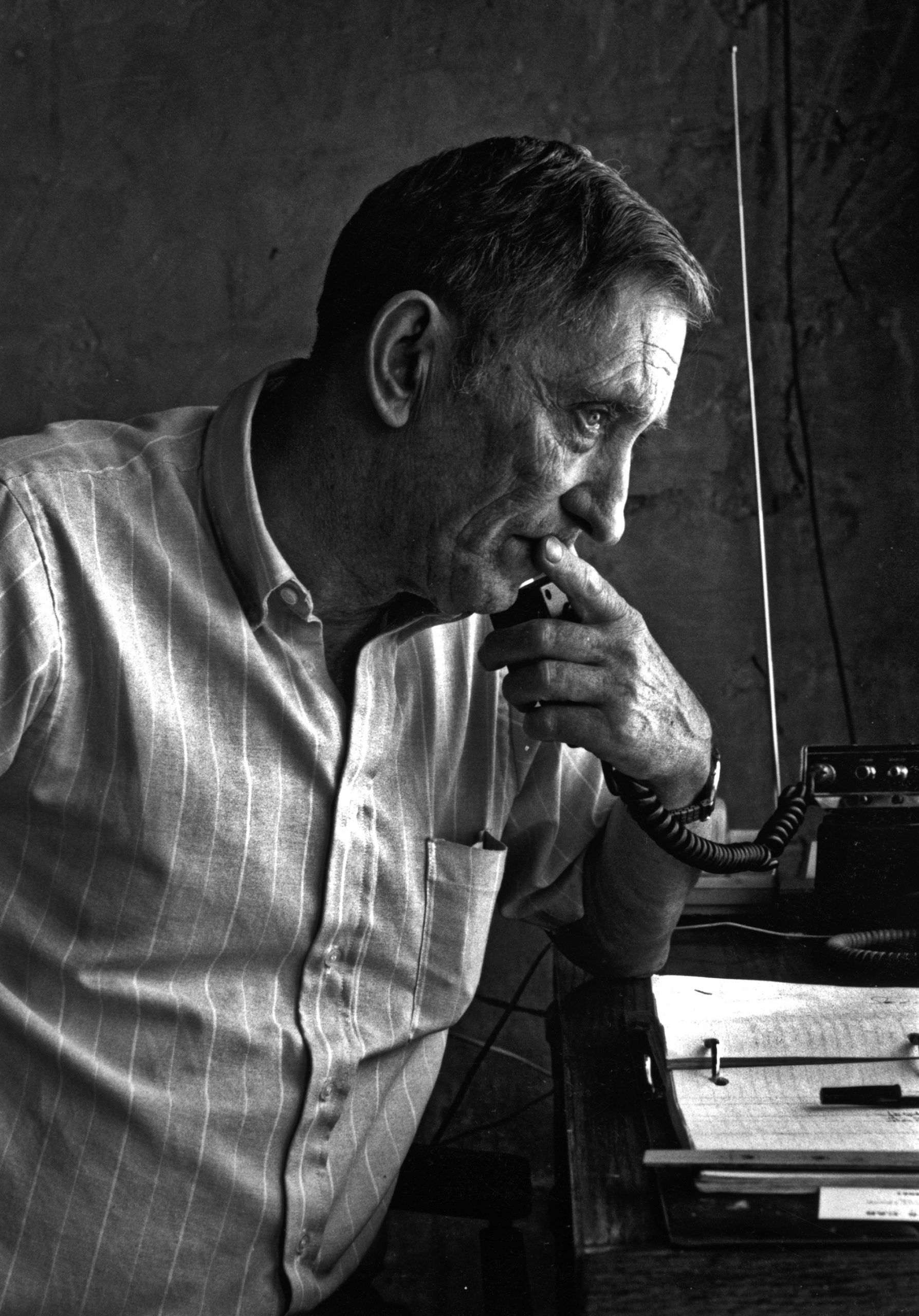Student project in LaFollette celebrates 20 years
By Alex Cate
Twenty years have passed since the first group of student photojournalists and professor Rob Heller took their initial excursion to the small town of LaFollette, Tennessee.
 The Eyes on LaFollette project was created in casual conversation between two friends who share a similar passion. Heller wanted to teach his students how to use photography to vividly tell a story, and adjunct professor and newspaper co-owner Larry Smith had the perfect place for Heller’s students to tell the story. Smith offered Heller one section in the weekly LaFollette Press to publish student photos of the town and its people. Thus, a marriage of a unique idea and the resources to show it off ignited what has become an annual trip to LaFollette for students to capture some of the untold stories of small-town America.
The Eyes on LaFollette project was created in casual conversation between two friends who share a similar passion. Heller wanted to teach his students how to use photography to vividly tell a story, and adjunct professor and newspaper co-owner Larry Smith had the perfect place for Heller’s students to tell the story. Smith offered Heller one section in the weekly LaFollette Press to publish student photos of the town and its people. Thus, a marriage of a unique idea and the resources to show it off ignited what has become an annual trip to LaFollette for students to capture some of the untold stories of small-town America.
“What’s funny about this project is I go back every year, but my students are seeing it for the first time,” says Heller.
Tucked away in one of the corridors of the UT Knoxville communications building is Heller’s office, and buried under stacks of newspapers, photographs and books, you’ll find him working on his next class project. He teaches both basic and advanced photojournalism in the School of Journalism and Electronic Media but only takes his advanced class to LaFollette and only when he sees they’re ready. The two-day trip is the culmination of a semester’s work and learning.
For many, it will be the first and only time to have their work published. Others have envisioned a career in photography. Like good journalists, they start researching early, taking a trip to LaFollette to get the lay of the land and ask permission to photograph around town.
“What I hope is students, through their research and through looking at the paper, will generate ideas before they go up there,” says Heller. Storytelling is emphasized. The project isn’t about who can take the prettiest picture or about capturing the gorgeous landscape of Campbell County but instead about the people of LaFollette. It’s about reflecting the inner workings of the town that sits just an hour away from Knoxville and campus.
 When it all began in 1993, Heller and Smith didn’t really know what to expect. They also didn’t know how the town would react.
When it all began in 1993, Heller and Smith didn’t really know what to expect. They also didn’t know how the town would react.
“People were really impressed. They took the kids in and were really nice to them. Sometimes they’d pull some pranks on the kids, and that was good for them, too,” Smith says with a chuckle. “They looked forward to them coming.”
Heller’s classes are generally small, having anywhere from 12 to 20 advanced photography students. As the years go by, he keeps a library of all their work—his own personal collection of LaFollette and his students’ publications.
The Tennessee State Museum in Nashville will honor this project in October 2014 with the Eyes on LaFollette 20th anniversary exhibit, which will run until the end of December 2014. Douglas Henry State Museum Commission Chairman Victor Ashe, former Knoxville mayor and ambassador to Poland, helped make the exhibit a reality.
Eyes on LaFollette has turned into a window into the lives of the LaFollette community and an outlet for students to display the skills learned over Heller’s course. The excursion begins one Friday morning late in the spring semester. Heller’s students meet in the photo lab at 7 a.m. They pack into cars and make the 50-minute drive north to LaFollette, where they spend the day walking around town. With their story ideas at the front of their minds, they take off in search of a cover-worthy photograph. Along the way, the group of mainly juniors and seniors will interact with people from all over town and with different backgrounds. These stories made up the meat of their yearly issue.
“For a picture to be on the front page, it’s got to tell a story, it’s got to be visually wonderful, it’s got to be technically perfect, it’s got to be the one that grabs your attention.”
These student photographers traverse the town looking for anything and everything to photograph. Some use the contacts they made earlier to get access to schools, businesses and events while others freely roam LaFollette. Mainly focusing on the people of LaFollette, the pictures are grouped in the newspaper to demonstrate some aspect of the town, such as people “at work” or maybe something as simple as “faces.”
Heller has been in charge of designing the newspaper issue for the last 20 years. His 2013 spring issue cover used the same font and design as his original issue in 1993. He reserves the right to pick the cover photograph.
“For a picture to be on the front page, it’s got to tell a story, it’s got to be visually wonderful, it’s got to be technically perfect, it’s got to be the one that grabs your attention,” Heller says.
Many times it has to incorporate eyes as well. For instance, the 2004 issue’s cover is a close-up of a shy boy peeking out from behind an adult. Only the best get the cover, and if there is no clear winner, they’ll share it amongst several photographs.
 After the trip, Heller and his students head back to Knoxville and spend the next several days whittling down their pictures to a group of a couple hundred best photographs. The young photographers lay out their work on the photo lab floor until they narrow their search to the 50 or so photographs that will be displayed in the following week’s Eyes on LaFollette section of the LaFollette Press. “That was fun because that was the moment you got to see what everybody else had. You got to see everybody else’s cards,” says Adam Brimer (Knoxville ’07) about the photo selection process. Brimer, a former photographer for The Knoxville News Sentinel, is now the dedicated photographer for the UT Foundation.
After the trip, Heller and his students head back to Knoxville and spend the next several days whittling down their pictures to a group of a couple hundred best photographs. The young photographers lay out their work on the photo lab floor until they narrow their search to the 50 or so photographs that will be displayed in the following week’s Eyes on LaFollette section of the LaFollette Press. “That was fun because that was the moment you got to see what everybody else had. You got to see everybody else’s cards,” says Adam Brimer (Knoxville ’07) about the photo selection process. Brimer, a former photographer for The Knoxville News Sentinel, is now the dedicated photographer for the UT Foundation.
When the project first started 20 years ago, it meant hours upon hours in a darkroom developing film and making prints. With digital technology today, the department’s laser printer does the work.
It’s a long, grueling week of work, but come the following weekend, another edition of Eyes on LaFollette has marked the story of LaFollette, a snapshot in time.



























